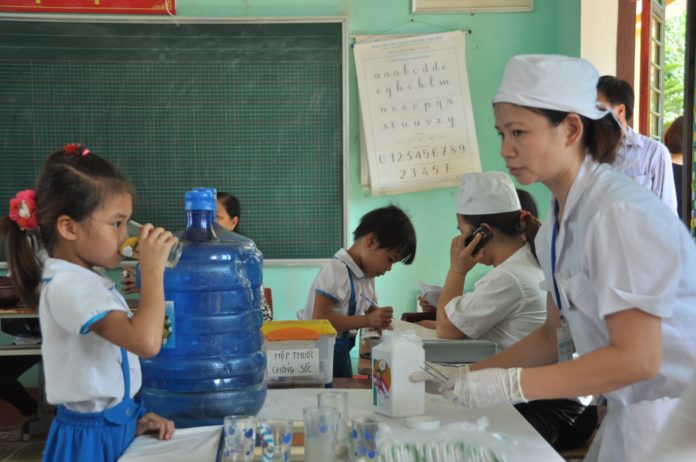One third of Cambodia is infected with the threadworm – Strongyloides stercoralis, finds study
Strongyloides stercoralis a soil transmitted threadworm is endemic in many tropical and subtropical areas of the world, including Cambodia. New research published in PLOS Neglected Tropical Diseases concluded that nearly a third of the studies population in Cambodia is infected with S stercoralis.
The threadworm is transmitted through infected larvae in the soil and, like hookworms, infect humans through the skin. The worm has the potential to cause long-lasting infections, particularly in immunosuppressed individuals with defective cell-mediated immunity, in whom it may lead to hyperinfection syndrome and disseminated strongyloidiasis involving several organs. Larvae are not detected by standard tests, so S. stercoralis has been under-detected and overlooked for decades. However, previous surveys in individual provinces of Cambodia have found high prevalence rates of the infection.
The threadworm is transmitted through infected larvae in the soil and, like hookworms, infect humans through the skin. The worm has the potential to cause long-lasting infections, particularly in immunosuppressed individuals with defective cell-mediated immunity
According to the WHO, an estimated 30–100 million people are infected worldwide with S. stercoralis. In India, the prevalence of S. stercoralis is around 5%, according to the available studies.
In this study, Peter Odermatt, of the Swiss Tropical and Public Health Institute, and colleagues used a diagnostic test that detects S. stercoralis IgG antibodies in the urine. 7,246 enrolled study participants took the test and provided data on demography, hygiene, and knowledge about helminth infection.
Overall, 30.5% of participants were infected with threadworms. The rate in individual provinces ranged from 10.9% to 48.2%, with prevalence rates below 20% in only five south-eastern provinces. The risk of infection increased with age, and open defecation was associated with a higher risk while knowledge about helminth infections lowered a person’s risk. In addition, S. stercoralis infection was positively associated with night temperatures, rainfall and distance to water, and negatively associated with land occupied by rice fields..
“Our study represents a clear risk map of S. stercoralis of a highly endemic setting,” the researchers said. “Based on these data the population at risk can be quantified and planning of concrete control approach become realistic.” Subsidies to support the high cost of drugs, or affordable generics, are needed to start tackling the worm, they added.


